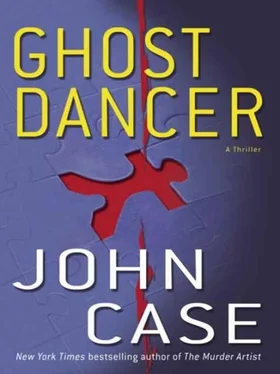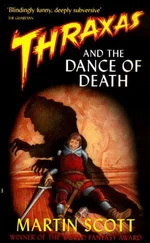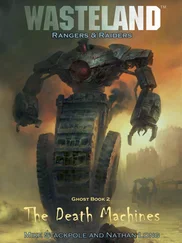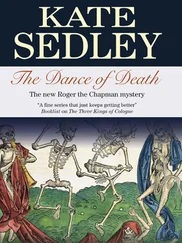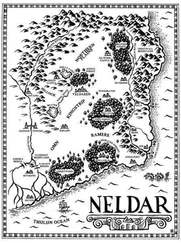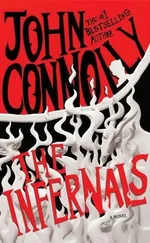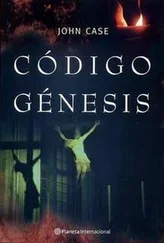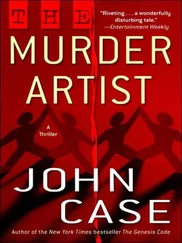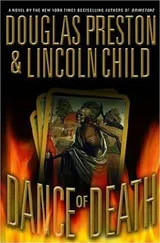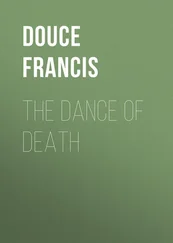To render the cabin itself motionless, Wilson rebuilt it as a “floating room,” reseating the structure on an array of helically shaped compression springs weighing ninety pounds each. Like the iron rods, the springs were custom-made. With the dampers in place, the cabin was, for all intents and purposes, independently suspended within the framework of the tower.
The Mexicans had no idea what he was up to, nor did they care. They thought he was loco, and that was fine with Wilson. When the work was done, he paid them off in cash, and bought them tickets to L.A. The farther they were from the ranch, the better he liked it.
The one person who worried him was the helicopter pilot. A ponytailed Vietnam veteran with the gray teeth of a meth addict, Chopper Charley was as necessary as his curiosity was worrisome. “Whatcha gonna do with that ?” “Damn! that’s a lot of cable.” “Lookit them springs! Why do you need…?”
Wilson thought about arranging an accident. It wouldn’t be hard, but he hesitated to do it. Even the most transparent “accident” would attract attention. The police would come to the ranch, asking questions, and almost anything could happen after that.
The solution came to Wilson one night when he was sitting on the porch of the main house, looking up at the stars, and thinking about Irina. The next day, he ordered a twelve-inch refractor telescope from a company in Texas, and arranged for Chopper Charley to deliver it. They unpacked the scope together, and the pilot was suitably impressed by Wilson’s eccentric intent. And he was delighted when Wilson promised to invite him to “a star-party, just as soon as I get the tower stabilized.”
Meanwhile, he set about building the weapons. The big one had been trucked in pieces to the lookout tower and hoisted up to the platform before he could even begin to assemble it. It was coming along, and its smaller mobile counterpart was actually ready.
The portable weapon was needed for tests, to ensure that he’d solved Tesla’s focusing problems. Just like the large one, the weapon itself had posed no challenges. Again, the issue was vibration and stability, providing it with a suitable base.
Toward this end, he bought a Cadillac Escalade (the pickup version, with the shortbed) and installed an array of special shock absorbers and damping mechanisms. The changes made the truck even heavier, so that it handled like a pig. But it worked well enough for his purposes.
Although the online topo maps were helpful, target selection was a problem that couldn’t really be solved until he went to the sites with a GPS. He’d purchased a Garmin watch for just that purpose. It had a built-in GPS system, so he could take readings unobtrusively.
He had a hierarchy of “small targets,” headed by Joe Sozio, the U.S. attorney for the Northern District of California. But he didn’t want to start with them. That would be like eating dessert before the main course.
The Patent Office was an obvious candidate for his tests, but the impact of the exercise might not be widely reported. The Patent Office was a bit like a tree falling in the forest. If nobody saw it fall and nobody heard it, what was the point? The New York Stock Exchange was a better choice in terms of impact, but its location was problematical. The sightlines would be terrible. Ditto the chances of getting away in the traffic.
He considered knocking out a satellite, but rejected the idea. For one thing, he wasn’t sure he could do it. For another, the incident might not be publicly reported. Then, too, he didn’t want to interfere with airline traffic before Irina arrived.
Yet another target, and a tempting one, was the Church of Latter-Day Saints – the Mormon Temple. For one thing, it was close, a straight shot, maybe four hundred miles east on the loneliest road in the world. More to the point, he had a grudge with the Mormons: They’d all but run the Paiutes off their traditional lands. It would be wonderful and fitting to trash the genealogical archives that were the Church’s bedrock. But it wouldn’t have much of an impact. Mormon researchers would be inconvenienced, and forced to work with paper until the records were restored. That would lead to fewer baptisms in the short run, but if you weren’t a Mormon, why would you care? Wilson didn’t.
That left SWIFT.
This was the acronym by which the Society for Worldwide Interbank Financial Telecommunication was known. A nearly invisible enterprise of massive import, SWIFT linked about 8,000 financial institutions in 194 countries, processing messages among them involving transactions adding up to more than six trillion dollars per day. And it wasn’t in New York.
It was in Culpeper, Virginia, a sleepy town in the shadow of the Blue Ridge Mountains. Even better, Culpeper would be a twofer, because another important financial institution was located there – the so-called Culpeper Switch, the central node in the U.S. Federal Reserve banking system. Why these two important institutions had chosen such an obscure place to call home was a mystery. But it was a bonus for him. More buck for the bang, you might say.
He was guessing that in Culpeper, sightlines would prove no problem, and what’s more, he’d be using the weapon in the same way he intended to use it on June 22.
It was fun to think about where to strike. The beam was flexible, and he hadn’t decided exactly what degree of damage to inflict. Certainly, he didn’t want to create a new Tunguska – not with these targets. That would draw too much attention, too soon. Ideally, the tests should be less than catastrophic, a little ambiguous, even a bit subtle. Let people wonder: Was this an accident? Some kind of natural occurrence – or what? How had it happened? Once he deployed the weapon in the tower, everything would come apart at the seams – and America would know that it was under attack. Or had been. Because, by then, the war would be over. And there would be nothing subtle about it. (Nor would there be anything subtle about what was going to happen to Robbie Maddox. But that was different. That was personal.)
All of the hard physical work had transformed Wilson’s body. After two months at the B-Lazy-B, he was ripped. A healthy diet, along with the lifting and climbing and hauling, had turned his body hard. He’d never been this fit, not when he was running track and playing ball – not even when he was lifting weights in Allenwood.
It was a good time. Moving from one thermal pool to another at the end of the day, it occurred to Wilson that in many ways he’d never been happier. Lying back in the water, he luxuriated in its heat, the air on his face crisp and cold, redolent of pine and sulfur. Looking up through a canopy of trees, he saw a jet sliding silently across the sky, heading west – and the future flashed before his eyes, like so much spatter. Because, of course, it was going to be an abattoir. There was no way around it. He was an instrument of the past. Nothing more, and nothing less – the fulfillment of a prophecy.
He had been named for the man who created the Ghost Dance. At least, that’s what he’d been told. He’d never lived on a reservation himself, though Mandy had taken him to a few, insisting that he should be proud of his heritage – but that was wishful thinking. Until he’d gone to prison, he’d more or less seen his Indian identity as something to overcome, a stigma.
Mandy had to drag him to the one ritual that truly made an impression on him – the reenactment of the Sun Dance. At the time he’d complained about it. Getting up at dawn? Watching a bunch of old men sing and dance? But to his surprise, something about waiting in the cold and dark, something about the solemn anticipation in the midst of so many others who looked like him, had been a powerful and exhilarating experience.
Читать дальше
